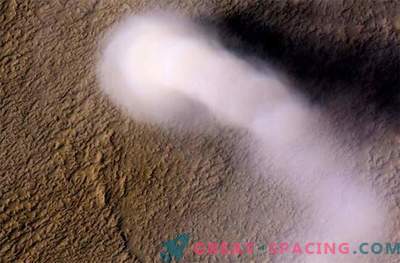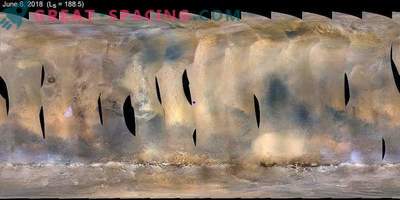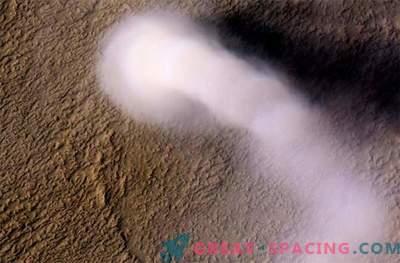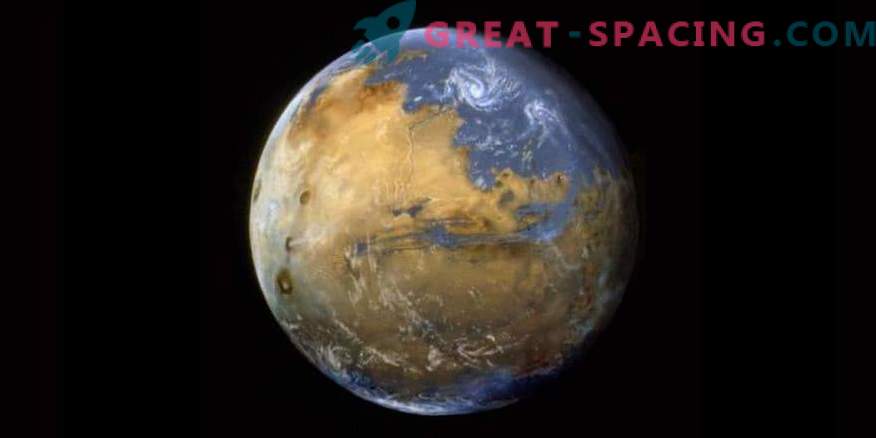
Modern Mars seems to be an arid and inhospitable desert. However, researchers believe that in the past on the surface one could observe not just water, but rivers, lakes and even the ocean. Where did all the water go? Scientists believe that they have finally found a potential culprit.
The red planet is characterized by a constant presence of dust, where the particle size reaches 1.5 microns. These particles are represented by iron oxide. Since Martian gravity is only about 38% of Earth's, air currents easily lift giant dust clouds to an altitude of up to 50 km. If we add here the wind speed of 100 m / s, we get large-scale dust storms.
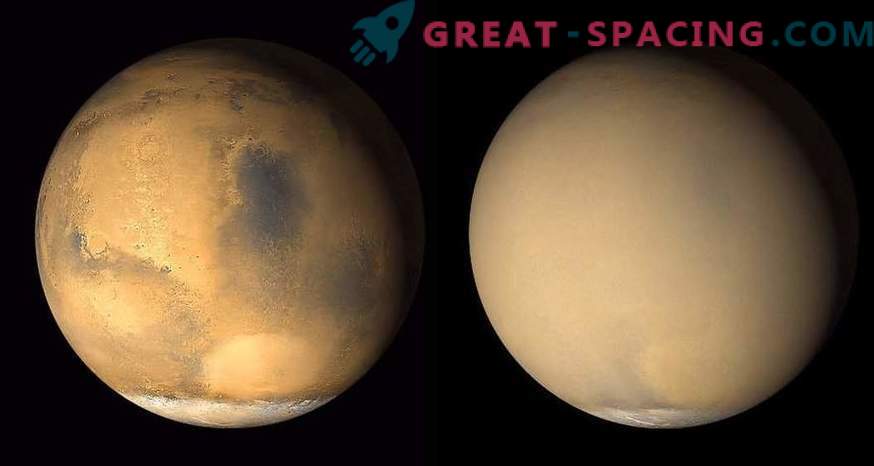
In 2018, a dust storm completely closed the planet
Sometimes these dust storms are just small yellow clouds. But sometimes their scale covers the entire planet, as happened in 2018. The average duration of dust storms reaches 50-100 Earth days.
We started talking about this phenomenon, since in a new study, scientists believe that it was giant dust storms that played an important role in removing all moisture from the Martian atmosphere. The researchers took the events of 2007 and 2018 as a basis. The team believes that such storms help the gaseous hydrogen formed due to rising water vapor to break out of the atmospheric layer. The scientist Nicholas Hivens says:
“We were able to detect an increase in the amount of water vapor in the middle atmosphere due to dust storms. It turns out that water vapor rises with the same air mass, which rises along with dust ”.
The process is carried out as the water molecules in the middle atmosphere (50-100 km) disintegrate under the action of the solar wind into hydrogen and oxygen atoms, after which the hydrogen is transported into space by solar winds. But the problem is that the nature of hydrogen removal varies greatly throughout the year. Therefore, it was important to find out whether dust storms can lift water vapor from the lower atmosphere to the middle one.
Scientists used data from the MRO orbiter to determine temperature, pressure, dust, and water vapor opacity levels for 2007. It turned out that there is a relationship between the flow of dust and the rate of hydrogen release.
Most likely, small dust storms increased the amount of water vapor in the middle atmosphere, but major events (2007 and 2018) showed a sharp jump in altitude (exceeding the multiyear average by hundreds of times).
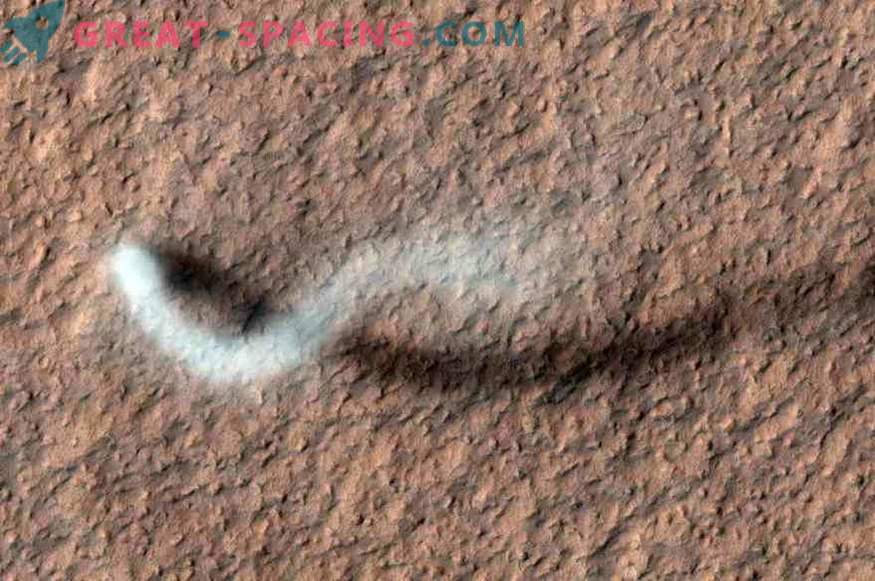
Dust tornado on Mars
There are interesting conclusions for a specific event in 2018. An increase in water vapor during a dust storm was observed at an altitude of 40-80 km. Some researchers have suggested that dust not only transports water, but also plays an important role in heating the atmosphere. Dumps absorb heat, increase the overall temperature, which leads to the “swelling” of the atmosphere and facilitate the process of gases in space. Researchers believe that billions of years ago, large dust storms could accelerate the process of moving water to a higher atmosphere. But it is important to understand that this is only part of the puzzle. Earlier, scientists said that among the factors that influenced the loss of water to Mars, there are also solar winds, which gradually destroyed the atmosphere.
Researchers plan to continue collecting data on dust storms in the modern world. Here are just these events can be very dangerous. For example, the last large-scale dust storm in 2018 caused the loss of the Opportunity rover, which went into sleep mode on June 12 (its solar panels did not receive light). February 13, 2019 at NASA officially announced the termination of the mission, since the device did not respond to signals.



